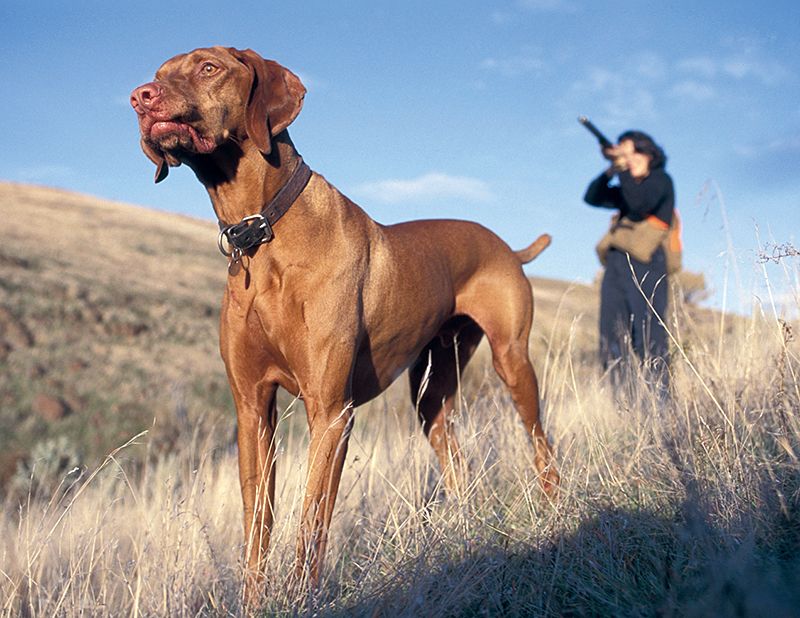Hunting is the pursuit of animals for food, sport, or profit. People once widely depended on hunting to live. In many areas, hunting is now a sport—that is, something people do for pleasure or to prove their abilities.
Kinds of hunting
depend on the game being hunted, the location, and the methods used to catch the animal. Game can be divided between big game and small game. Big game includes such large animals as deer, elephants, and mountain goats. Small game includes rabbits, raccoons, squirrels, and many types of birds, such as quail. Hunters use weapons, traps, and domesticated animals to help them hunt. Modern sport hunters often use a rifle or shotgun. Many people also hunt with bows and arrows or crossbows. Some types of dogs, such as hounds, pointers, and setters, are bred especially for hunting. Horses have also been widely used by hunters to help chase down animals.

Sport hunting is meant to be challenging. Thus sport hunters discourage the use of any tool that makes killing animals too easy or that could kill many animals at once. Most people consider using a machine gun, or hunting from trains, planes, or automobiles, to be unsporting. Most sport hunters do not use traps or snares.
History.
Early humans practiced subsistence hunting, hunting for food to survive. About 10,000 years ago, people began farming, which provided another source of food. But people in farming societies still hunted to protect their crops from wild animals. They also hunted animals for such materials as fur, hides, or ivory. The pharaohs of ancient Egypt hunted for sport, as did the rulers of ancient China, India, and Persia.

Other societies continued to rely on subsistence hunting, especially in areas where it was hard to grow crops or raise livestock. Some subsistence hunters still exist today, including people among the Inuit in the Arctic and the Hadza in Tanzania. In many societies, only men traditionally hunted. But in others, women hunted, too.
Laws and conservation.
Game laws once made it illegal for anyone but the rich and powerful to hunt. Hunting parks or game reserves—areas where only powerful people were allowed to hunt—were created as early as 1100 B.C. in parts of Asia. Kings and nobles in Europe also set up many parks between the 1000’s and 1500’s, some of which still exist today. It was illegal for anyone else to hunt animals in these reserves. Illegal hunting is called poaching. From the early 1700’s to the early 1800’s, certain forms of poaching were punishable by death in England.
In the mid-1800’s, people began to worry that some animals were being hunted to extinction. For example, hunters killed off an African zebralike animal called the quagga. By the late 1900’s, most nations had passed laws making it illegal to hunt endangered or threatened species. Poaching remains a problem, however. Such animals as the white rhinoceros in Africa remain in danger of extinction from overhunting.
